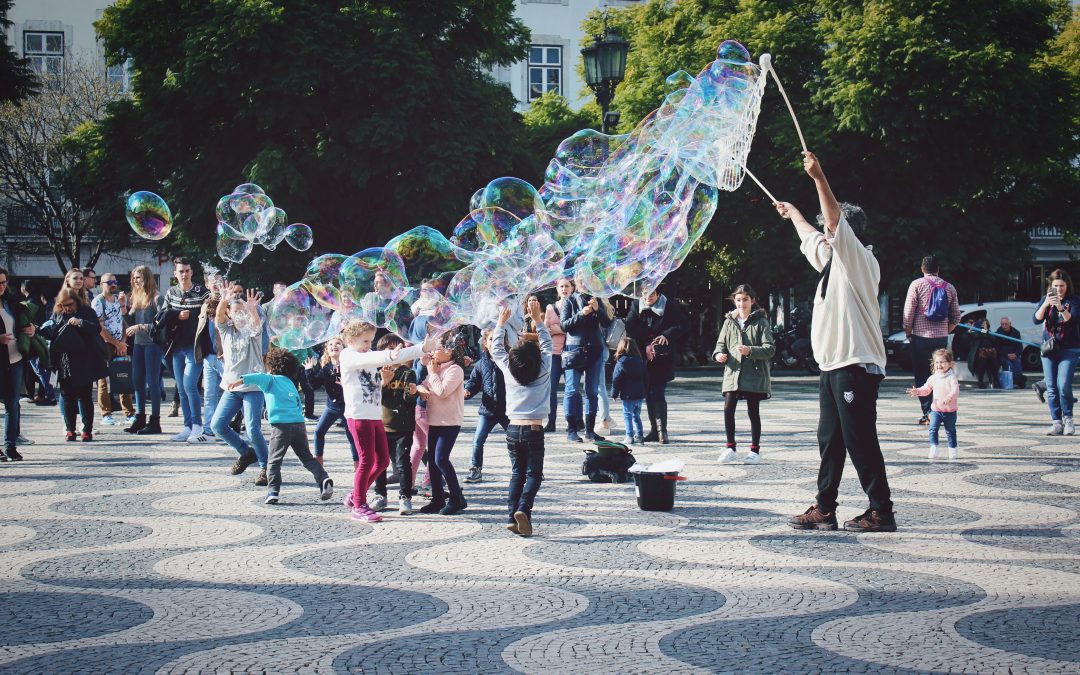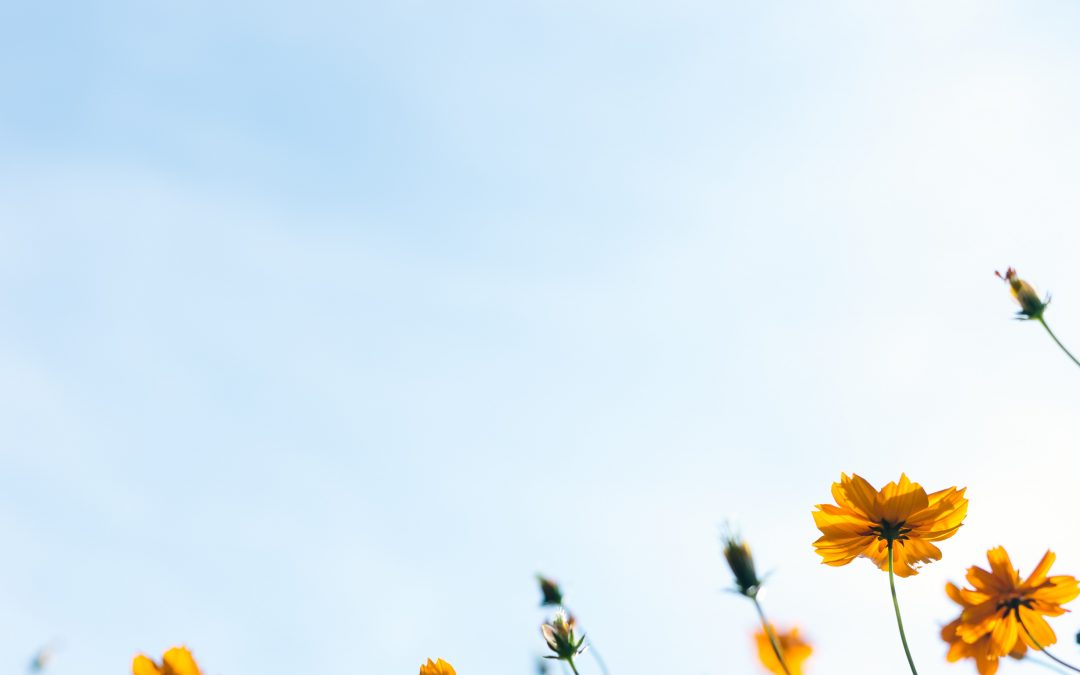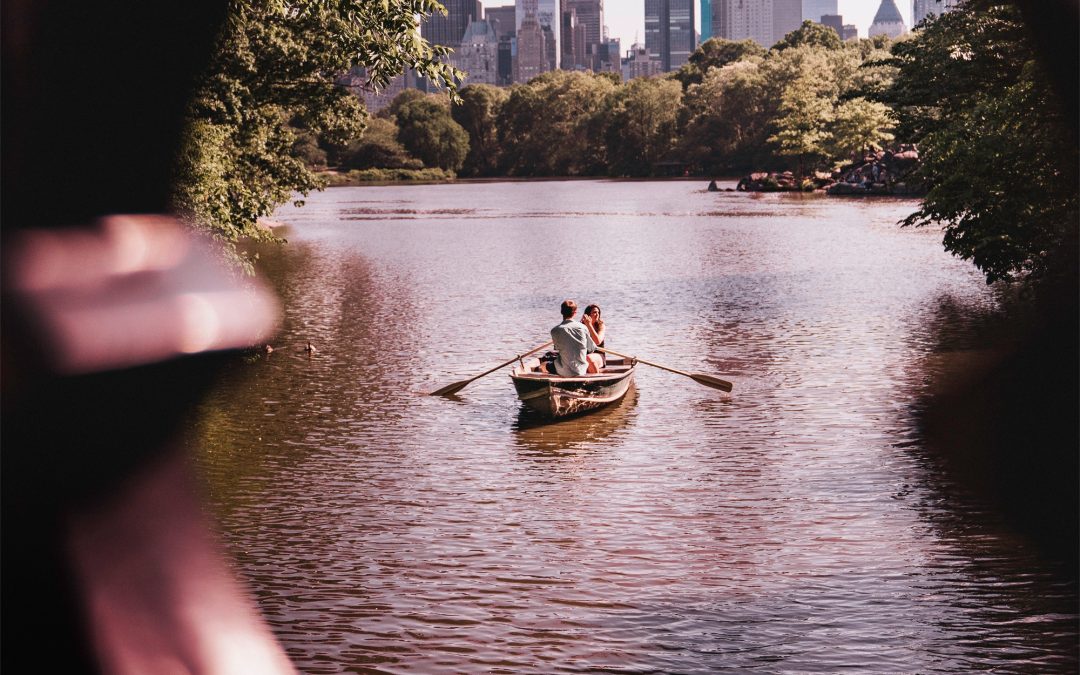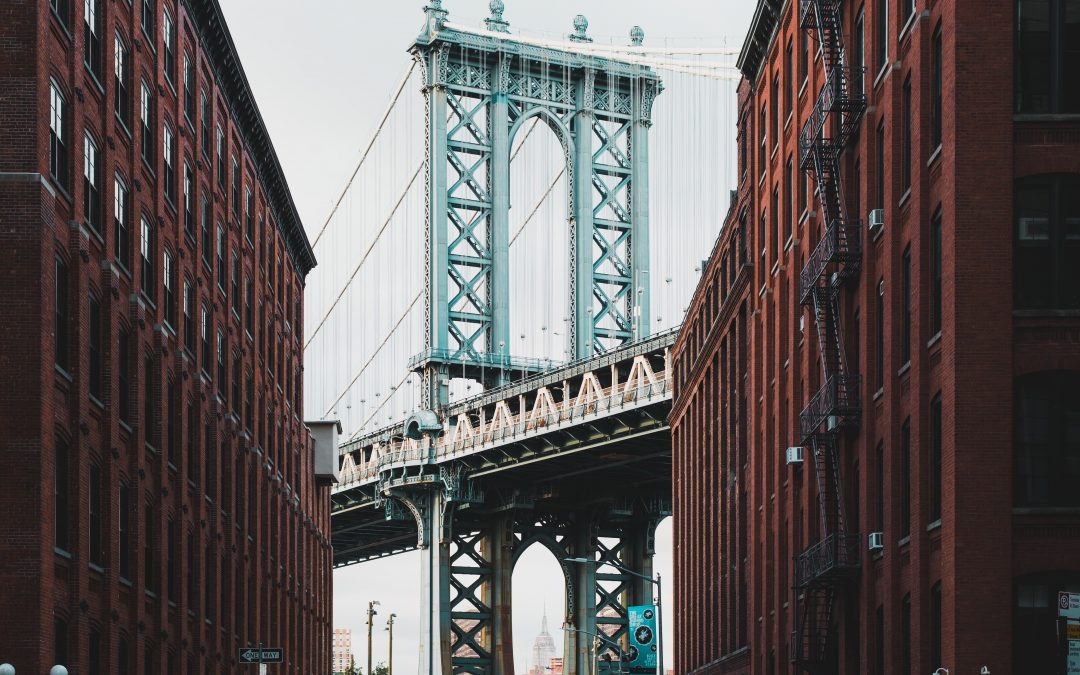
by BCB Property Management | Sep 1, 2016 | Brooklyn, Neighborhoods, New York City
As evidenced by the plethora of apps and housing services that have cropped up in the past decade, NYC real estate is an industry unto itself. These companies have generated lots of data on a market that changes drastically from year-to-year. So if you’re approaching the NYC apartment hunt from a particular standpoint — for example, as a student — you can hone in on key variables and find the neighborhood that’s right for you.
For students, those key variables tend to include affordability, proximity, safety, subway access, and space. As a student, you may not need to be on campus everyday. Depending on your schedule, you may also be able to travel at off-peak times, which can be good for crowded train lines, but bad for catching an express. Or you may want to stick close to campus, to take advantage of the library, gym, and other facilities. You may be looking for a more spacious apartment if you intend to study at home, or for an area with lots of local coffee shop options. You might strongly prefer to live alone, to make studying easier — or you may be OK living with roommates, which will save money.
Whatever your situation, here’s a place to start — a list of some up-and-coming and tried-and-true neighborhoods in Manhattan and Brooklyn:
East Village/Lower East Side
In Manhattan your options are limited, mostly due to price. That said, the most viable downtown spots for students are the East Village and the Lower East Side. The Lower East Side is south of the East Village, but both are marked by older tenement walk-up buildings and a booming bar/restaurant/gallery scene.
While the Lower East Side and the East Village have a rich nightlife and history, compared to other neighborhoods, they lack options for basic neighborhood staples: food stores, gyms, etc. The Lower East side is most easily accessible by the J/M/Z/F/B/D subway lines, and the East Village by the 6/N/R/F/L.
Inwood/Washington Heights
At the opposite end of the island, you have Inwood and Washington Heights. Similarly old pre-war buildings in these neighborhoods provide more space this far north. Inwood is north of Washington Heights, and both are well north of Central Park, which might give some commuters pause. The rest of Manhattan is available by the A express train, however, and there’s nothing quite like the rush of entirely bypassing Central Park during rush hour.
Residents this far north have access to their own green space, and plenty of it. Inwood is quieter than Washington Heights, but both are relatively calm communities.
Clinton Hill/Prospect Heights
Clinton Hill and Prospect Heights are both old neighborhoods located north of Prospect Park–Brooklyn’s answer to Central Park. Clinton Hill is closer to the water while Prospect Heights is more south, closer to the park. Both have history, charm, and great food. Both are relatively quiet and safe and allow easy access to Fort Greene, Park Slope, and other surrounding neighborhoods.
Clinton Hill is slightly less accessible by the A/C/G lines, while Prospect Heights boasts access to the 2/3/4/5/B/Q lines.
Crown Heights/Bedford-Stuyvesant (Bedstuy)
Crown Heights and BedStuy are the Eastern counterparts of Clinton Hill and Prospect Heights, with BedStuy hugging the water and Crown Heights bordering Prospect Park. These neighborhoods are booming: both are culturally diverse and have lots on hand for food and entertainment.
As with Clinton Hill and Prospect Heights, Crown Heights has access to the 2/3/4/5 lines, and BedStuy to the A/C/G lines.
Greenpoint
For North Brooklyn, consider Greenpoint. Located above Williamsburg, Greenpoint similarly boasts great food and coffee. The sticking point is the impending 18-month shutdown of the ‘L’ train in January 2019, which will severely inhibit travel to Manhattan. The rest of Brooklyn is accessible via the G train.
Depending on how long your degree takes to earn, Greenpoint might be off the list or might actually be a cheap choice. Williamsburg has seen an influx of renters over the last decade, with prices rising accordingly, but the L shutdown could reverse that trend. Assuming enough viable travel alternatives to Manhattan — bus, ferry, Uber — Greenpoint could end up being a deal in the long run.
This list encompasses just a few of the perennial and newly minted options in Manhattan and Brooklyn, without even covering Harlem, Hamilton Heights, Murray Hill, Yorkville, Bushwick, Flatbush, Sunset Park, and Bay Ridge.
This still leaves us Queens, perhaps hottest borough right now in terms of real estate. Beyond Astoria, there’s plenty to consider with Sunnyside, Ridgewood, Woodside, Flushing, Jackson Heights, and of course, Long Island City. Check out Kingsbridge and Riverdale in the Bronx, as well as St. George on Staten Island.
All of these neighborhoods have lots to offer, but it’s best to start out with a list of what factors are most important to you, because the apartment hunt in New York city always demands some sacrifices. Good luck!

by BCB Property Management | Apr 22, 2016 | Brooklyn, History, New York City
There are roughly 2,027 bridges in all of New York City — far too many to list in a single blog post. Of these, ten are considered historic landmarks: The Brooklyn Bridge, the Manhattan Bridge, Queensboro, Washington, University Heights, Carroll Street, Macombs Dam, George Washington Bridge, Highbridge, and Hell Gate Bridge. Each possess unique histories that make the Big Apple’s infrastructure exceptional.
NYC’s first bridges
King’s Bridge, later called Kingsbridge, was built first in 1693. It earned its name by charging everyone that crossed money, save for King’s soldiers. The wooden bridge was rebuilt in 1713 and allegedly demolished in 1917, though some maintain that it remains buried in the landfill between the Southern Bronx and Manhattan where Spuyten Duyvil Creek once was.
New York City’s oldest still-standing bridge, on the other hand, is the High Bridge, also between the Bronx and Manhattan. It was was built in 140 feet over the Harlem River in 1843 to carry water as part of the Croton aqueduct. Use of the bridge for water supply ceased in 1949, and it remained out of use for decades. In 2015, the High Bridge was renovated and reopened for pedestrian usage.
The oldest vehicular bridge in New York City is the Brooklyn Bridge, built in 1883. At the time (and even still today) the Brooklyn Bridge was considered an architectural wonder — it was the largest extension bridge in the world at a stunning 1595.5 feet long. When the Williamsburg Bridge was built in 1903, it overtook the superlative for length at 1600 feet.
The Brooklyn Bridge and Williamsburg Bridge are two of the four major bridges built along the East River between 1870 and 1910. Both the Queensboro Bridge and the Manhattan Bridge were completed in 1909.
Bridges today
Further into the 20th century, the George Washington and Verrazano-Narrows Bridges were completed, the former in 1931 and the latter in 1963. Both overtook the title of longest suspension bridge at the time of their opening — the Verrazano, at 6,690 feet, remains today the longest in America and the 11th longest in the world.
The George Washington Bridge is the most heavily trafficked bridge not only in the city, but the world. In a single year, the bridge accommodates over 51 million cars, trucks, and other vehicles, or 280,714 a day as of 2010.
Today, 21 major bridges connect to the island of Manhattan, with thousands more within and connecting the five boroughs. Though many claim Pittsburgh has the most bridges (as it may, per capita), New York City is otherwise only beat by Hamburg, which has as many as 2500 bridges, in total number.
Though over a century has passed, New York City’s bridges — especially the historic and record-breaking ones — remain beautiful, iconic and integral to the city. For hundreds of thousands that cross daily, treated to a spectacular view of the skyline and Lady Liberty, it’s the saving grace of their commute.
Featured image: Thomas Hawk via Flickr

by BCB Property Management | Apr 15, 2016 | Brooklyn, Neighborhoods, New York City
Though both meteorologists and the groundhog agreed spring would come early this year, after a brief warm spell New York City is experiencing an unseasonably chilly early April. Still the flowers are blooming and the sun is out — the temperature, surely, is not far behind. And even a brisk 50-something degrees is fine enough for New Yorkers to get out of the house and start enjoying longer days, brighter skies and fresh-aired adventures.
For Brooklynites, there are an abundance of events right in the borough that either celebrate the season or compliment it. Here’s a sample of some of the most notable events taking place in various Brooklyn neighborhoods.
Cherry Blossom Festival at the Brooklyn Botanical Gardens
The brilliant pink and white trees known as cherry blossoms bloom in New York in April every year. There is perhaps no better place to view this spectacle than the Brooklyn Botanical Gardens, its 52 acres located just east of Prospect Park touching Prospect Lefferts Gardens, Crown Heights and Prospect Heights in length.
2016 marks the Brooklyn Botanical Gardens’ 35th anniversary of the festival, called Sakura Matsuri for its celebration of traditional and contemporary Japanese culture. The festival takes place on Saturday April 30 and Sunday May 1, offering 60 events and performances. Tickets cost $25 for adults and are free for children under 12.
Cherry blossom trees change at different rates by the day, so you can check them out at BBG and elsewhere during surrounding dates. To track bloom process, simply check out the website here.
Hot Sauce Festival at the Brooklyn Expo Center
The weather might not be hot just yet, but that doesn’t mean you mouth can’t be. Hot sauce enthusiasts flock from near and far for the Hot Sauce Festival, held at the Brooklyn Expo Center in Greenpoint, Brooklyn on April 24th and 25th.
Dozens of local vendors participate in numerous categories, including Louisiana style, chipotle, fruit-based, jalapeno, habanero, all-natural, chicken wings, spicy salsa, and even best label art. Attendants can sample a wide variety if their taste buds can handle it. General admission is $10, while $55 can get you five beers and a lunch platter and $100 can get you an all-access pass.
If lovers of spice miss this one and are willing to wait out the summer, the Brooklyn Botanical Garden’s annual Chili Pepper Festival is right around the corner on October 1.
Pop Music Festival
If you’re not into BBQ or cherry blossoms, music is a near-universal attraction. There are, of course, hundreds of music events during any given season in the city that never sleeps — one needs only throw a stone at the nearest bar. For those specifically interested in indie pop, the Pop Music Festival may be the springtime event for you.
Also hosted at several Manhattan venues, Brooklyn locations include Baby’s All Right, the Knitting Factory and Littlefield, where a stellar lineup of up-and-coming bands will rock out from the afternoon to the evening, followed by after parties into the wee hours of the morning.
Who knows? Your next favorite band may be there, prepping your next warm weather jam.
The Brooklyn Flea
There’s nothing quite like an open-air flea market. After months of stuffy indoor fleas, the Brooklyn Flea gets some fresh oxygen: starting in early April, the popular flea market celebrates its ninth outdoor season.
You can find the Brooklyn Flea in various neighborhoods across the Brooklyn borough. The Fort Green Flea is open every Saturday, and the DUMBO Flea every Sunday. An offshoot of the Brooklyn Flea called Smorgasburg occurs every Saturday in Williamsburg and Sunday in Prospect Park, featuring culinary vendors of all flavors.
Mermaid Parade
This Brooklyn event may require a long subway ride south, but it makes up for distance in nautical nonsense. Coney Island’s annual Mermaid Parade takes place on June 18th, at the tail end of the season (the summer solstice is June 20).
Began in 1983, the Mermaid Parade honors the early 20th century Coney Island parades: like Mardi Gras, but with flippers. Floats, groups, and individuals are showcased in the parade, and even onlookers get in on the action by dressing as close to marine life as their closets and budgets will allow.
Even better, admission is free! Just be prepared to swim through some fishy crowds, and possibly get a little wet and glittery in the process.
Featured image: Katie Killary via Flickr

by BCB Property Management | Mar 14, 2016 | History, New York City
New York City boasts 28,000 acres of parkland; from an aerial view, this greenery pops amidst a sharp grid of gray buildings and roads. The parks that characterize the Big Apple range greatly in size and shape, from Staten Island’s sweeping Greenbelt to Septuagesimo Uno, an 140 square foot park in the Upper West Side.
NYC contains within its boroughs over 1,700 parks, some dating back to the 1600s. Parks have played important roles in New York City since America’s origin, and throughout the years have experienced periods of both neglect and rejuvenation. Today’s city parks are cleaner and safer than ever in no small thanks to a robust Parks and Recreation Department.
Here’s a look at three of the city’s most iconic parks, and how they have evolved over the years from colonial times to present day.
Bowling Green
New York City’s oldest park has been in use for 400 years, beginning in the 17th century when Dutch and English settlers used it as a cattle market and parade ground. The area was made into a park in 1733, paved with cobblestones in 1744, and under the control of the British used as execution grounds for Revolutionary prisoners. A statue of King George III was erected there in 1770 before being toppled (and recast as musket balls) after the Declaration of Independence was signed in 1776.
The park was improved with trees and grass in 1784, after which it quickly became a gathering place for public meetings and events throughout the 19th century. Presidential mansions were built there for George Washington to reside before the US capitol was moved to Philadelphia.
Though Bowling Green suffered neglect after WWII, the city restored it in 1970 and it’s since become one of the highest trafficked plazas in New York City. The tear-drop shaped park is a Historical Site and its Charging Bull statue a key fixture of the Financial District.
Central Park
The most famous park in NYC hardly needs an introduction. Central Park, designed by renowned landscape architect Frederick Law Olmsted with the help of Calvert Vaux, was the first public park to be built in America. Olmsted and Vaux won a design competition with a plan they called “Greensward Plan,” which profoundly shaped the most famous and frequently visited park in the world.
Central Park’s story dates back to New York City in the 1820s through 50s, when population quadrupled in a short period of time. When it became apparent that a public park would be needed for residents to escape the chaos of city life, the park was established in 1857. It was built on 778 acres of city-owned land, then expanded to its current 843 acres in 1873.
The park’s construction wasn’t immediately beneficial for all, however. The designated land had inhabitants at the time: free blacks and Irish immigrants who had built communities there complete with farms, churches and cemeteries. Some 1,600 people were evicted in the construction process overall.
Once built, Central Park would go through various phases of decline and revival. The park’s first decline came right after it’s construction and lasted through the turn of the 20th century before being cleaned up in the 1930s. In the 1960s Central Park became host for political and cultural events, and saw a second decline before undergoing renovation in the 80s, 90s, and early 21st century.
Prospect Park
Also designed by Olmsted and Vaux, Brooklyn’s Prospect Park has a history far older than its creation in 1867. Mount Prospect, located in the middle of the park, was forged by glacial activity over 170,000 years ago in the region. Much of the area was forested before European colonization cleared out a significant portion of woods.
Prospect Park was also the site of the Battle of Long Island during the American Revolution. Though the Continental Army lost this battle, they were able to hold off the British long enough to escape to Manhattan. Plaques honoring this event are part of the reason it was chosen to be preserved as a large park area.
Between 1915 and 1980, budget cuts and maintenance cutbacks saw Prospect Park decline to the point at which it was more of a hazard than a boon to residents in surrounding neighborhoods. When the Prospect Park Alliance was formed in 1987, an extensive restoration project was launched to carefully rebuild the original architecture.
Today, the 778 acre park includes a zoo, Botanical gardens, ice skating rink, waterfalls, playgrounds, bandshell, and ball fields. These quasi-modern additions make Prospect Park a mixture of historic scenery, quiet greenery, and activities for parkgoers of all ages.
Stay tuned for more information on NYC neighborhood parks in future blog posts.

by BCB Property Management | Jan 12, 2016 | Brooklyn, Neighborhoods, New York City
Brooklyn in the early 20th century was home to a quickly growing population and developing community.
There was noticeable growth in city transportation. Funded through New York City tax dollars, there were grave advances made. Developers used tax dollars to construct new bridges, trolley lines, underground subway lines, and elevated railroads. These advances extended transportation into the outskirts of surrounding boroughs creating much easier access into Manhattan.
Brooklyn started to develop into a city where Trolleys occupied the streets. Soon after, the Williamsburg Bridge was finished in 1903 followed by the first subway line to tunnel under the East River in 1908. With the increase in transportation from Brooklyn to Manhattan, residential development on began to skyrocket in this borough. As tenants rushed in, Brooklyn’s character started to develop as well.
The Brooklyn population saw another spike in diversity during the 1930s due to two reasons: The Great Migration and the extension of the A train from Harlem to Brooklyn. With such a heavy manufacturing industry in Brooklyn during the time, there was great opportunity for jobs. This New York City borough eventually became the supply for industrial resources needed around the country.
As years went on, Brooklyn began to phase out of the manufacturing industry. The environment wasn’t built to sustain this line of work. Additionally, then the Dodgers moved from Brooklyn to Los Angeles and this beloved city quickly lost their beloved anchor.
Dodgers games were once a community activity for locals and became the culture of the heart of Brooklyn. With the team’s absence, it wasn’t until Brooklyn adopted an artistic community that they started to regain a distinct culture
With the rising rents in Manhattan, the vibrant new communities right over the water in Brooklyn went from undiscovered neighborhoods to very desirable places for all ages and walks of life. Communities like DUMBO, Williamsburg, and Greenpoint not only attracted immigrants but also locals looking to pay less than Manhattan prices.
Brooklyn now supports a population of over 2.5 million people with 170 NYC Subway stations available throughout the borough. The residential development has seen waves of new audiences but present day Brooklyn has a complete list of both vibrant and historic communities.





